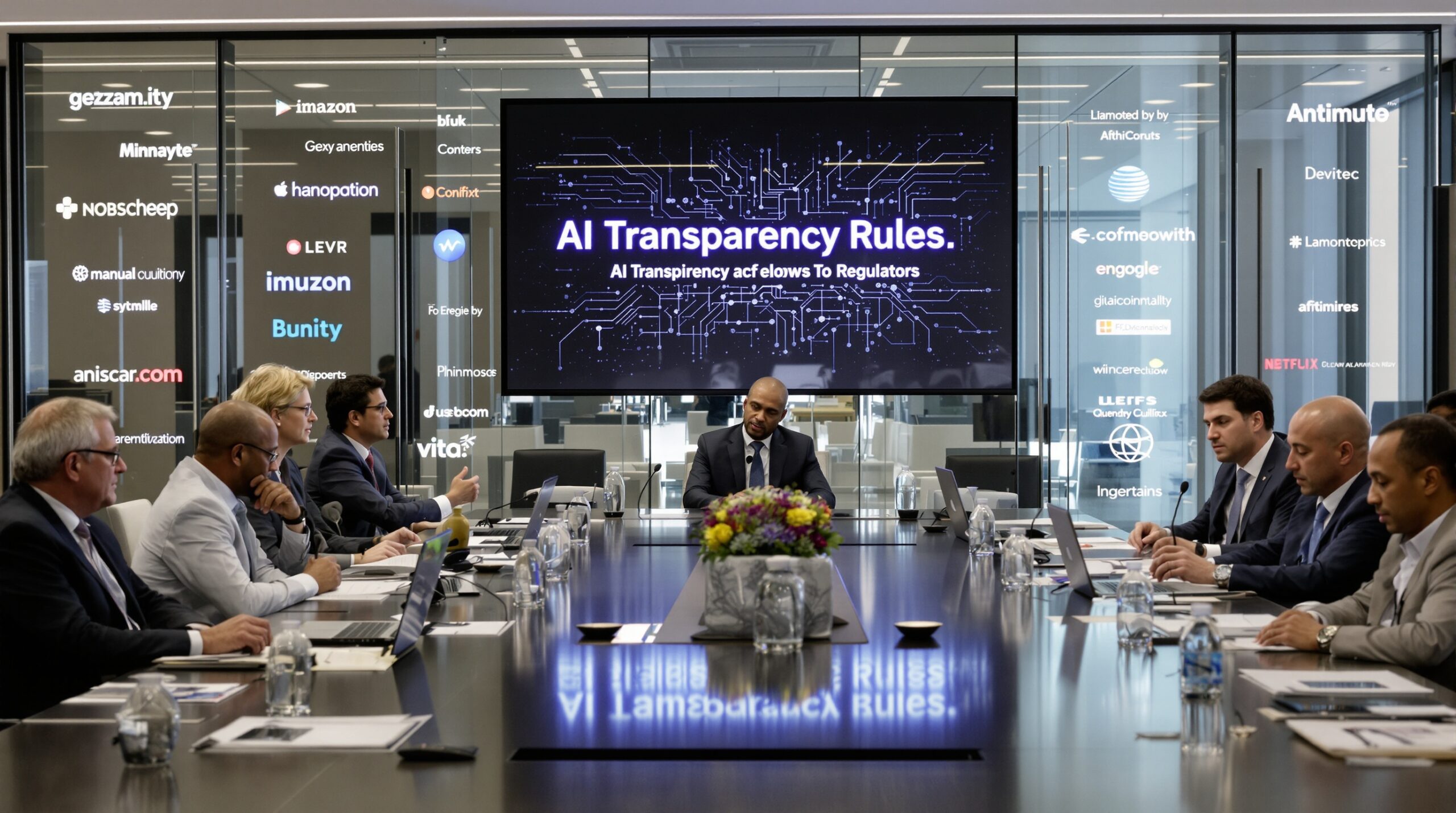Global regulators have introduced landmark artificial intelligence transparency regulations to address increasing concerns about AI’s societal impact. These sweeping rules mark a decisive shift in how AI systems are governed, targeting both developers and deployers. Major technology companies now face urgent compliance obligations or may consider mounting coordinated legal challenges against the regulatory changes.
Background and Scope of New AI Regulations
Regulatory bodies across the United States, the European Union, and Asia have accelerated their work to regulate fast-developing AI systems. Their shared central goal is to enforce transparency at every stage of AI development and application. The rules demand that companies openly disclose data sources, design choices, and algorithmic risks.
The new policies encompass all advanced general-purpose AI, as well as models used specifically in finance, healthcare, and law enforcement. National data protection commissions and technology regulators will supervise compliance, according to official statements. Experts predict these standards will reshape corporate AI strategy worldwide.
Essential Transparency Requirements
The regulations contain several crucial transparency mandates. First, companies must document AI model training data in detail and provide public summary descriptions. Second, they must reveal all third-party data suppliers and identify synthetic or human-labeled content sources within datasets. This directive aims to reduce bias and increase accountability for data provenance.
Companies must also create “model cards.” These standardized documentation forms disclose each AI system’s design, performance metrics, intended applications, and known weaknesses. The regulations require accessible disclosure of any risk assessments concerning misuse, privacy implications, or safety concerns.
Developers and organizations that deploy AI must implement user-facing transparency. This includes providing notifications when individuals interact with AI systems and allowing users to request explanations for automated outcomes. These measures will empower consumers and oversight agencies alike to better understand AI operations.
Global Regulatory Motivations and Context
AI’s rapid integration into daily life has sparked regulatory action worldwide. Across numerous sectors, opaque algorithms now wield enormous influence over financial decisions, hiring practices, and even criminal justice. Public trust in algorithms has been shaken by several high-profile failures and discriminatory outcomes linked to poorly understood systems.
Government leaders emphasize their commitment to protecting civil rights and fostering trustworthy technology adoption. By mandating transparency, regulators hope to minimize risks like algorithmic discrimination, data leaks, and unsafe deployment. International coordination on this issue is unprecedented, reflecting AI’s profound cross-border implications.
Industry Reaction and Compliance Concerns
Technology giants, including Google, OpenAI, and Meta, have issued statements acknowledging the need for greater AI responsibilities. However, these companies contend that broad disclosure requirements could expose proprietary business information and raise competitive risks. Many industry leaders warn of practical challenges in tracing the origins of all data used to train massive generative models.
Developers also fear the burden of creating model documentation at the required detail and updating it as AI systems evolve. Some worry that strict compliance could stifle innovation and delay the release of beneficial AI tools. Technology lawyers and compliance officers have begun preparing for significant legal and logistical hurdles.
Small and mid-size AI firms feel particular pressure, as they possess fewer resources to achieve the mandated transparency. Compliance costs may raise market entry barriers, potentially strengthening the dominance of established tech companies. These concerns have drawn the attention of competition authorities and policy analysts.
Legal Challenge: Arguments and Strategies
Several large companies are evaluating possible lawsuits to block or delay the new AI transparency rules. Legal teams argue that the regulations could infringe on trade secrets. They may assert that forced disclosure of data sources and model internals constitutes unconstitutional government overreach, especially under laws protecting intellectual property.
Industry groups are organizing to advocate for modifications using lobbying and legal channels. Some experts suggest that regulators could be forced to rewrite or relax specific transparency clauses if the rules are successfully challenged in court. Ongoing legal skirmishes appear likely in the near future, as both sides seek to defend their interests.
Broader Implications for AI Governance
The unveiling of these rules carries significant weight for the future of AI accountability and public oversight. Advocates argue that mandated disclosures will enable external audits and foster responsible innovation. They believe transparency rules will encourage researchers, journalists, and watchdog organizations to scrutinize AI effects on society.
Safety researchers claim that published “model cards” and risk reports will improve rapid detection of bias, threats, and unexpected behaviors. Transparent notifications for AI interactions may restore public trust and ensure users understand when they are dealing with machines, not people.
If legal challenges halt or weaken these rules, some analysts fear unchecked AI could reinforce inequality and erode human rights. Others argue that poorly designed rules might simply push development underground or offshore, out of reach of any oversight. Creating effective, enforceable, and fair transparency regulations thus remains a difficult balancing act for policymakers.
Technological Adaptations and the Future of AI Transparency
AI research and technology teams now face a new era of documentation and record-keeping. Advances in “machine learning operations” (MLOps) may play a crucial role, helping automate compliance checks and transparency reporting. Some startups have already begun developing software tools designed for regulatory documentation and automated model traceability.
Open-source efforts could gain momentum, as collectively maintained model and dataset registries will ease reporting burdens. Collaboration between industry and academia is also expected to accelerate, with shared transparency standards reducing legal and technical uncertainty. Greater global dialogue will likely shape future revisions of the transparency rules.
Conclusion: A Pivotal Moment for AI Accountability
The unveiling of sweeping AI transparency rules represents a watershed moment in global technology policy. While major tech firms prepare for compliance or possible legal battles, the core question remains: How can society best ensure AI benefits all while protecting fundamental rights? As the rules take effect, the world is watching to see if transparency leads to safer, fairer, and more accountable AI systems—or to new disputes over the pace of digital innovation.

